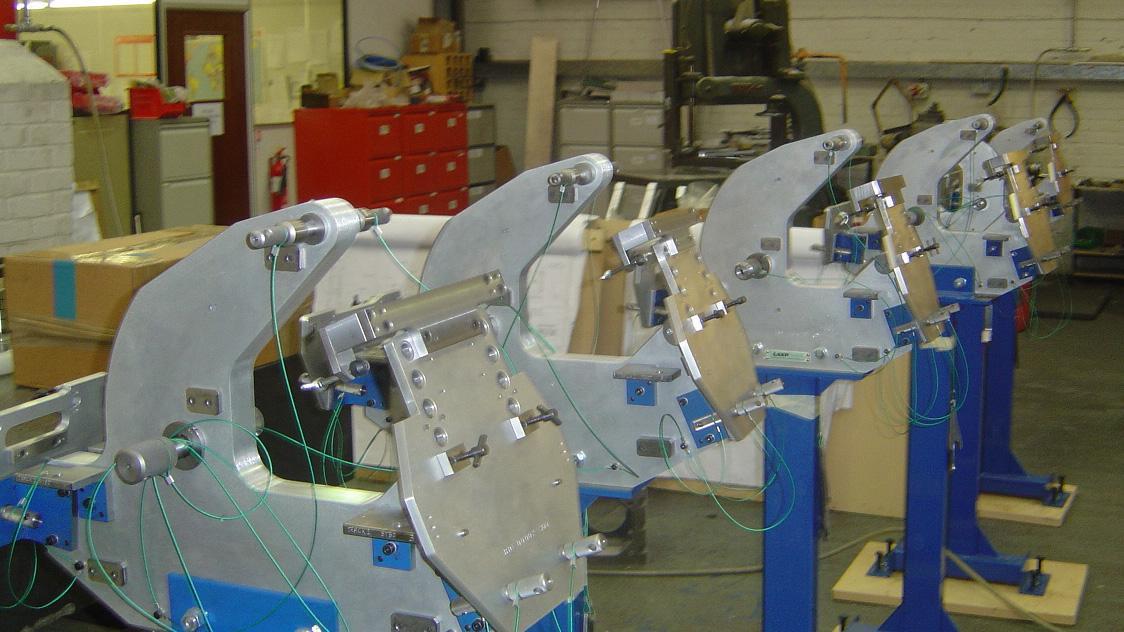Assembly Fixtures for Automotive, Aerospace & Industrial Applications

In today’s competitive world, precision and efficiency are everything. Whether it’s the automotive sector, aerospace engineering, or large-scale industrial production, every component has to fit perfectly. That’s where assembly fixtures come in. These specialized tools ensure parts are aligned, positioned, and assembled accurately—making them the backbone of modern manufacturing. If you’re exploring innovative solutions, Assembly Fixtures are key to driving consistency and quality in your processes.
What Are Assembly Fixtures?
At their core, assembly fixtures are custom-designed tools used to hold, support, and position components during manufacturing. They eliminate guesswork and human error, ensuring each part is assembled with high precision. Think of them as the “guiding hand” in production, giving manufacturers confidence that every product meets exact specifications.
Why Assembly Fixtures Are Vital Across Industries
No matter the industry, production teams face the same challenges: accuracy, speed, and repeatability. Assembly fixtures solve these problems by:
-
Reducing reliance on manual adjustments.
-
Improving cycle times and productivity.
-
Ensuring consistent quality across high-volume production runs.
-
Minimizing rework and scrap costs.
When you consider the stakes in automotive safety, aerospace engineering, or heavy industry, the importance of reliable fixtures becomes crystal clear.
Assembly Fixtures in the Automotive Industry
In automotive production, thousands of parts need to come together flawlessly. A misaligned panel or poorly fitted component can compromise safety and aesthetics. Assembly fixtures in automotive applications are designed to handle everything from small interior components to large body panels.
-
Body-in-White (BIW) Fixtures: Used to align car body panels before welding.
-
Interior Assembly Fixtures: Ensure dashboards, seats, and trim fit perfectly.
-
Chassis Assembly Fixtures: Maintain precision in the undercarriage and structural frame.
By using advanced fixtures, automotive manufacturers achieve faster production, fewer errors, and improved vehicle quality.
Assembly Fixtures in Aerospace Applications
The aerospace sector demands uncompromising accuracy. A single defect can jeopardize passenger safety or mission success. Assembly fixtures in aerospace are built to withstand complex geometries and stringent regulations.
-
Wing and Fuselage Fixtures: Guarantee precision alignment during aircraft construction.
-
Engine Component Fixtures: Support exact positioning of turbine blades and engine casings.
-
Composite Material Fixtures: Handle lightweight but delicate aerospace materials without damage.
Here, fixtures aren’t just tools—they’re critical safety enablers.
Assembly Fixtures in Industrial Manufacturing
From heavy machinery to consumer electronics, industrial manufacturers depend on fixtures for large-scale efficiency.
-
Welding Fixtures: Hold parts steady for robotic or manual welding.
-
Machining Fixtures: Secure materials during milling, drilling, or cutting.
-
Inspection Fixtures: Provide a reliable platform for measuring quality and tolerances.
By integrating fixtures into production lines, industries gain the ability to scale without sacrificing accuracy.
Different Types of Assembly Fixtures
Fixtures aren’t one-size-fits-all. They’re engineered to suit specific applications. Common types include:
-
Manual Fixtures: Simple designs for low-volume or custom assembly tasks.
-
Semi-Automated Fixtures: Blend human input with automation for efficiency.
-
Fully Automated Fixtures: Integrate robotics for high-volume, high-speed assembly.
-
Modular Fixtures: Flexible setups that adapt to different product designs.
The choice depends on production volume, complexity, and cost considerations.
Benefits of Using Assembly Fixtures
If you’re still on the fence about investing in custom fixtures, consider these benefits:
-
Consistency: Every unit comes out exactly the same.
-
Efficiency: Reduced assembly time means higher throughput.
-
Safety: Workers handle less manual alignment, lowering risks.
-
Cost Savings: Less waste, fewer reworks, and improved reliability.
-
Scalability: Fixtures grow with your production demands.
The Role of Technology in Modern Fixtures
Technology has transformed fixture design. Today’s fixtures incorporate CAD modeling, 3D printing, and even sensor-based monitoring. In some cases, they integrate with Industry 4.0 systems for real-time data tracking. This means not only faster production but also smarter, more adaptive fixtures that help manufacturers stay competitive.
Custom vs. Standard Fixtures – Which Is Right for You?
Some manufacturers prefer off-the-shelf fixtures, but custom solutions often deliver better ROI. Custom fixtures are designed specifically for your product, ensuring maximum accuracy and efficiency. For industries like automotive and aerospace, where tolerances are tight, custom assembly fixtures are the preferred choice.
If you’re evaluating options, trusted providers like Expert Technologies Group specialize in delivering tailored solutions that align with your exact needs.
Maintenance and Longevity of Fixtures
Like any tool, fixtures need regular care. Routine inspections, cleaning, and recalibration extend their lifespan and ensure consistent performance. Neglecting maintenance can lead to costly downtime, so most companies schedule fixture servicing as part of their standard operations.
Challenges in Fixture Design and How to Overcome Them
While fixtures are invaluable, designing them isn’t always straightforward. Challenges include:
-
Designing for multiple product variants.
-
Balancing cost with precision.
-
Managing space on production lines.
The solution? Work with experienced engineers who understand your industry’s unique demands. They can create flexible, durable fixtures that adapt as your production evolves.
Future Trends in Assembly Fixtures
Looking ahead, the future of fixtures is exciting. Expect more:
-
Smart Fixtures: Equipped with sensors for data-driven decision-making.
-
Lightweight Materials: Using composites to reduce fixture weight and improve handling.
-
Robotic Integration: Fixtures that seamlessly work alongside collaborative robots (cobots).
-
Sustainability: Eco-friendly designs that minimize material waste.
These innovations will continue to raise the bar for efficiency and safety across industries.
Frequently Asked Questions About Assembly Fixtures
1. What’s the difference between a jig and a fixture?
A jig guides the tool during a process, while a fixture holds the workpiece in place.
2. Can fixtures be reused for different products?
Yes, modular or adjustable fixtures are designed for versatility.
3. Are fixtures expensive?
Initial costs can be high, but they quickly pay for themselves through reduced errors and faster production.
4. How long do assembly fixtures last?
With proper care, fixtures can last for many years, even in high-volume environments.
Conclusion – Assembly Fixtures Drive Precision and Efficiency
From the car you drive to the airplane you board, assembly fixtures play an invisible yet crucial role in ensuring safety, quality, and efficiency. For automotive, aerospace, and industrial applications, they’re not just helpful—they’re essential. By investing in advanced assembly fixtures, businesses secure consistent production, reduce costs, and stay competitive in demanding markets.







